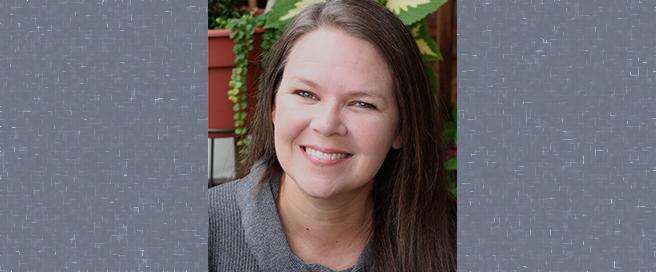Teacher Feature: Sarah Montzka

October 3rd, 2015
Sarah Montzka has been Associate Director of the Music Institute’s Suzuki Program since fall 2013 and a Music Institute viola and violin instructor since 2001. She is Chair of the Suzuki Association of the Americas’ board of directors.
What was the role of music in your life when you were a child?
Music was everywhere! My parents signed me up for piano lessons at age three and, from then on, it was a happy whirlwind of recitals, ensembles, and festivals. I added viola in sixth grade and my youth orchestra friends quickly became my main peer group. Summers were spent at music camps like Sewannee Summer Music Festival and Interlochen Arts Camp.
What inspired you to become a Suzuki teacher?
During my senior year at the Cleveland Institute of Music, I took Michele George's Suzuki pedagogy class. I was drawn to Suzuki's philosophy that all children can learn and the idea that music is a path for developing not only musical talent, but also character traits like kindness, integrity, and peace.
What is your favorite piece to teach?
Bohemian Folk Song! It's the first piece in the viola literature that isn't also in the violin or cello books, so it feels like our song. Bohemian Folk Song showcases the viola's dark, brooding tone. I also love that it's in a minor key.
You have taught at Suzuki workshops and institutes across the world. What is one of the most memorable experiences you’ve had at a workshop or institute?
Jamie was a student in one of my Dalcroze classes at the Colorado Suzuki Institute. Jamie had suffered a stroke in utero, leaving her with right-sided weakness, loss of speech center, and hemianopsia (blindness in half her visual field). When I met Jamie, she could not walk. The class I was about to teach involved not only walking but also running, marching, jumping, hopping, skipping, and galloping. I couldn’t even imagine how Jamie could participate in the class, but I held firm to Suzuki’s belief that within every child lies an unlimited potential and accepted Jamie into the class. Jamie’s mother later wrote about the experience:
“…she was two and not yet walking unassisted. The teacher asked each child to stand and to make his/her way around the circle to music in any fashion they chose (walk, trot, skip, bounce, etc.). When it was Jamie's turn, we held our breath. The teacher called her name. Jamie said, ‘Me march!’ She stood up (alone, first time ever) and proceeded to march around that circle to the music her teacher played. We were filled with such joy! We stood there crying as she marched around that circle, head held high. When she got back to her spot, she just fell to a sitting position (plopped down, really) and sat there like she'd been marching her whole life. It was a moment I will never, ever forget. Today, she's trying to learn violin as well. It's difficult for her as she has little use of her right hand and wrist. But every time the bow scratches across the strings I imagine new neural pathways forming in her beautiful brain.”
It was an incredible honor to be a small part of Jamie's first steps and a powerful reminder that every child can.
Your son studies Suzuki string bass at the Music Institute. What insights have you developed as both a Suzuki parent and teacher?
I have a much greater respect for the day-to-day effort involved in Suzuki parenting. In lessons, my students do what I ask them to do largely because I am the teacher and I see them just once a week. With our son, the combination of the parent-child relationship and daily practice results in a different dynamic. Some days he doesn't want to practice and, true confession, some days I wish we didn't have to practice. This is when I take a step back and remember the bigger picture. I think about all of the skills I want our son to have when he goes out into the world, traits like problem-solving skills, resilience, dedication, confidence, and generosity. Research shows us, time and time again, that music study is uniquely qualified to develop not just neural pathways in our brains, but also these non-cognitive skills. When we practice--especially on the days that we aren't in the mood to practice--we are not only practicing the instrument but also honing our ability to persevere. This long-term perspective is my touchstone on the tough days.
What excites you most about assuming the leadership of the Suzuki Association of the Americas? What is your vision?
It is a great honor to work with my fellow board members and Suzuki Association of the Americas CEO Pam Brasch. They are an amazing bunch of people; brilliant, dedicated, innovative, thoughtful, and kind. Embedded in the Suzuki philosophy is the idea that, when we work together toward a meaningful outcome, we not only make the world a better place but also nourish our own character. This concept is brought to life in our meetings; ideas evolve through thoughtful, creative collaboration. I leave each board weekend feeling inspired to work even more diligently on behalf of our Suzuki community. It reminds me of a Theodore Roosevelt quote: “Far and away the best prize that life offers is the chance to work hard at work worth doing.” I am committed to a bright and bold future for Suzuki education. My vision is for every family to experience the power and joy of the Suzuki journey.
